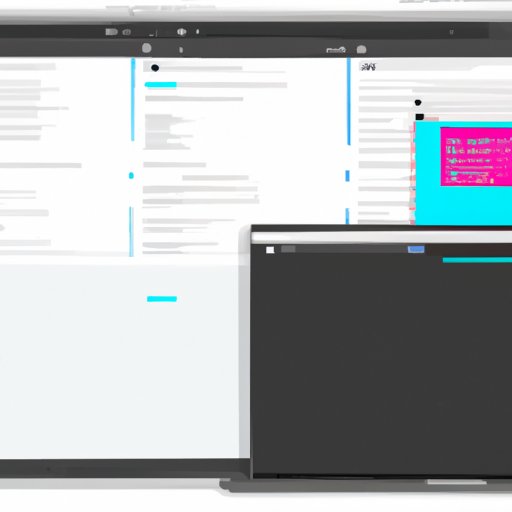Step-by-Step Guide
Whether you’re writing a report or troubleshooting issues, taking screenshots can be a lifesaver. In Mac, you can capture anything on the screen by utilizing the built-in screenshot tool. Here’s how:
1. Full Screen Screenshot
Step 1: Press Command + Shift + 3 on your keyboard.
Step 2: Your screenshot will be saved on your desktop as a .png file.
2. Selection Screenshot
Step 1: Press Command + Shift + 4 on your keyboard.
Step 2: Drag the crosshair and select the area you want to capture.
Step 3: Release the mouse button to take the screenshot.
Step 4: Your screenshot will be saved on your desktop as a .png file.
3. Window Screenshot
Step 1: Press Command + Shift + 4 on your keyboard.
Step 2: Press the Spacebar.
Step 3: Move the blue camera icon to the window you want to capture.
Step 4: Click on the window to take a screenshot.
Step 5: Your screenshot will be saved on your desktop as a .png file.
It’s that easy! Remember to experiment with different methods to find what works best for you.
Shortcut Method
Keyboard shortcuts can save you a tremendous amount of time and effort. Here are the most commonly used keyboard shortcuts for taking screenshots on a Mac:
- Full Screen Screenshot: Command + Shift + 3
- Selection Screenshot: Command + Shift + 4
- Window Screenshot: Command + Shift + 4 and then Spacebar
Use these keyboard shortcuts to take screenshots quickly and efficiently.
Using Third-Party Tools
If you want additional features and a more user-friendly interface, consider using third-party screenshot-taking tools. Here are some of the most popular tools for Mac:
- Snagit
- Lightshot
- Skitch
- Monosnap
Each app has its pros and cons, such as editing features, reliability, and price. We recommend doing research and experimentation to choose the best app for your needs. Here is a step-by-step guide for using Snagit:
Step 1: Choose a capture mode.
Step 2: Select the area or window you want to capture.
Step 3: Edit the screenshot as needed.
Step 4: Save the screenshot or share it with others.
These apps provide more versatility and options for taking screenshots on your Mac.
Sharing Your Screenshots
Sharing your screenshots is essential in many situations, such as collaborating with coworkers or documenting errors. Here’s how to share your screenshots on a Mac:
Step 1: Determine the appropriate file format for your situation, such as .png or .jpeg.
Step 2: Open your screenshot in Preview app.
Step 3: Edit your screenshot as needed, such as cropping or adding text.
Step 4: Save your screenshot or share it via email, messaging, or cloud storage.
By following these steps, you can easily share your work with others.
Advanced Screenshot-Taking Methods
If you need to capture specific areas of your screen or set a delay before taking a screenshot, the advanced methods are for you. Here are two more advanced methods:
1. Specific Window or Portion of the Screen Screenshot
Step 1: Press Command + Shift + 4.
Step 2: Press the Spacebar.
Step 3: Hold down the Option key and move the camera icon to the window or portion you want to capture.
Step 4: Release the Option key and click on the window or portion to take a screenshot.
Step 5: Your screenshot will be saved on your desktop as a .png file.
2. Timed Screenshot
Step 1: Open Terminal app.
Step 2: Type in “screencapture -T 10 screenshot.png” (without the quotation marks). This will take a screenshot after a 10-second delay.
Step 3: Press return to execute the command.
Step 4: Your screenshot will be saved on your desktop as a .png file.
These advanced methods provide more specialized capabilities for screenshot-taking.
Troubleshooting
Although taking screenshots on Mac is generally straightforward, issues may arise from time to time. Here are some solutions to common problems:
Problem: Blurry or Low-Quality Images
Solution: Check your settings to ensure a high-quality output. If necessary, adjust the DPI (dots per inch) of your screenshots.
Problem: Incorrect File Formats
Solution: Ensure that you’re using the appropriate file format for your needs, such as .png or .jpeg.
Problem: Unable to Take Screenshots
Solution: Restart your Mac or check your storage space. If that doesn’t work, consult the Apple Support team for additional assistance.
Conclusion
Now that you know the different methods for taking screenshots on your Mac, you’re equipped to handle any situation that may come your way! Remember to experiment and find what works best for your needs.
